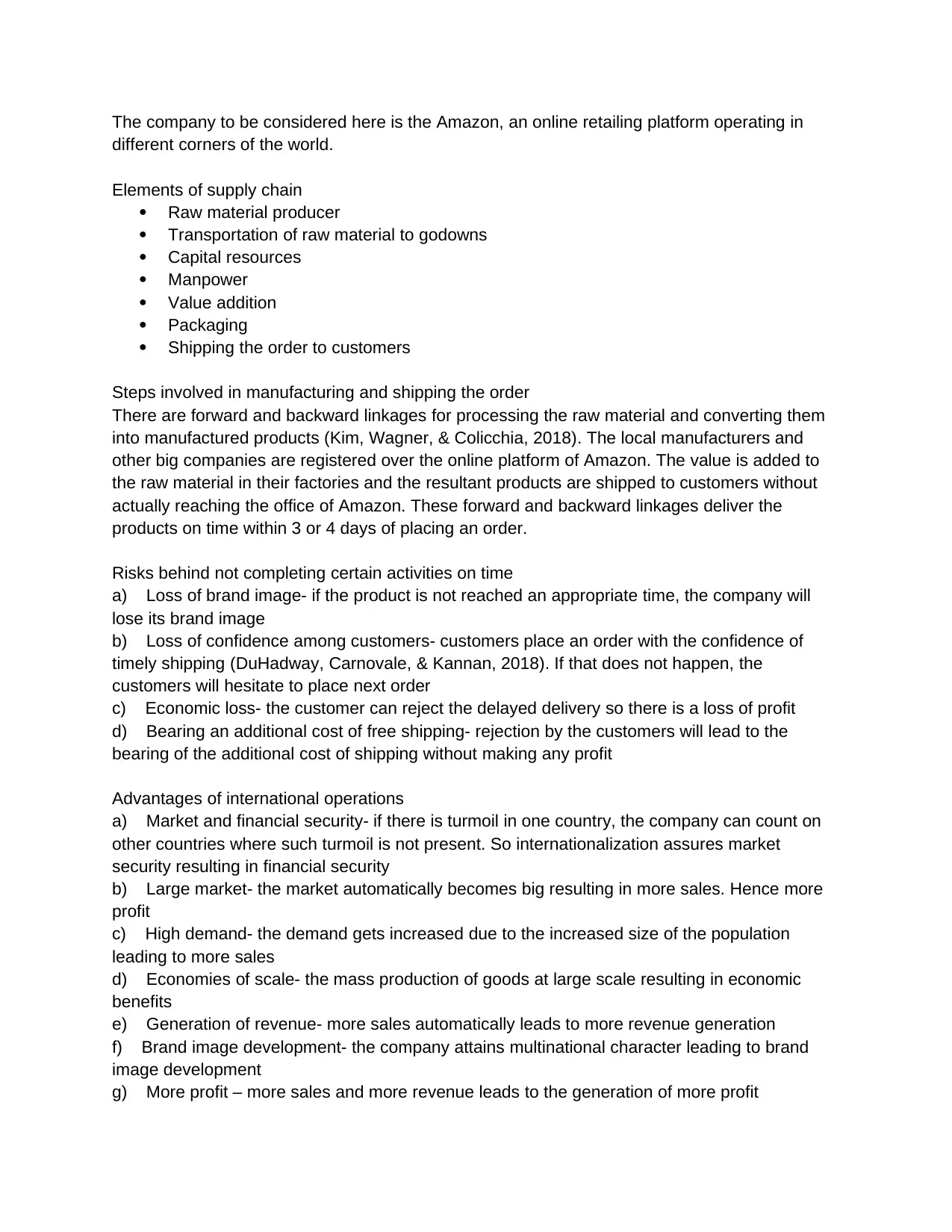Analysis of Amazon's Logistics and Supply Chain Management Report
VerifiedAdded on 2023/05/27
|5
|711
|110
Report
AI Summary
This report provides an analysis of Amazon's supply chain management, focusing on its global operations. It examines the key elements of the supply chain, including raw material sourcing, transportation, and shipping, and highlights the steps involved in manufacturing and delivering orders to customers. The report identifies potential risks, such as loss of brand image, customer confidence, and economic losses, while also outlining the advantages of international operations, including market security, large market size, and revenue generation. Additionally, the report discusses the disadvantages of international operations, such as language and cultural barriers, legal complexities, and competition with local producers. The analysis is supported by references to relevant academic literature, providing a comprehensive overview of Amazon's supply chain strategies and challenges.
1 out of 5











![[object Object]](/_next/static/media/star-bottom.7253800d.svg)